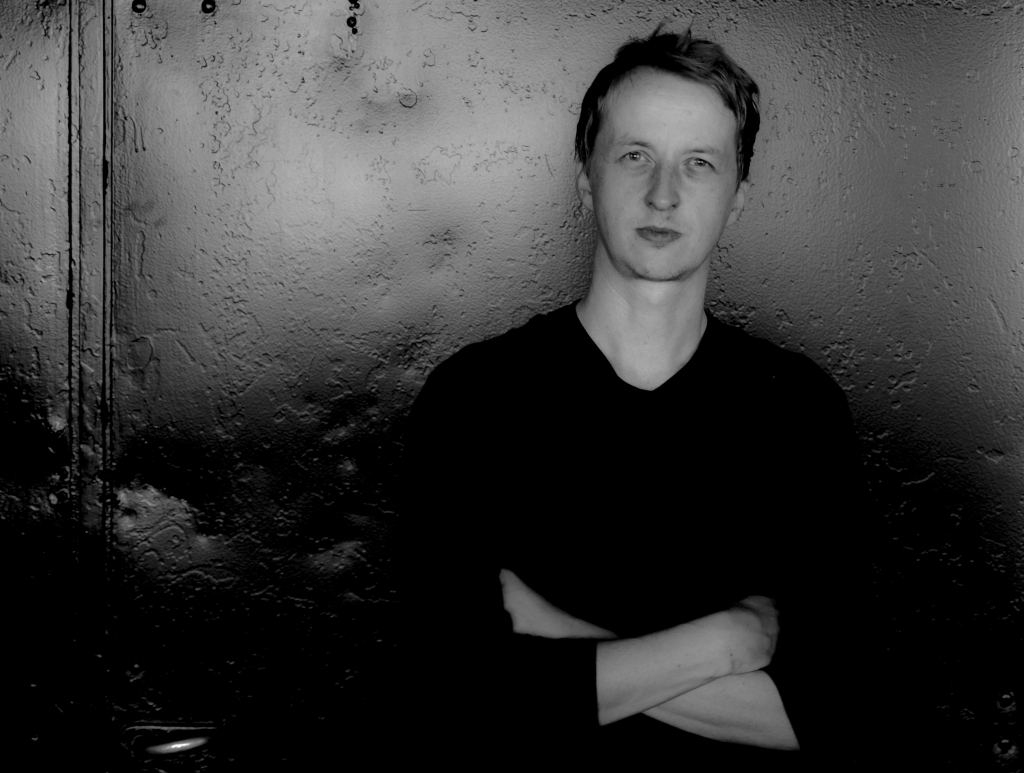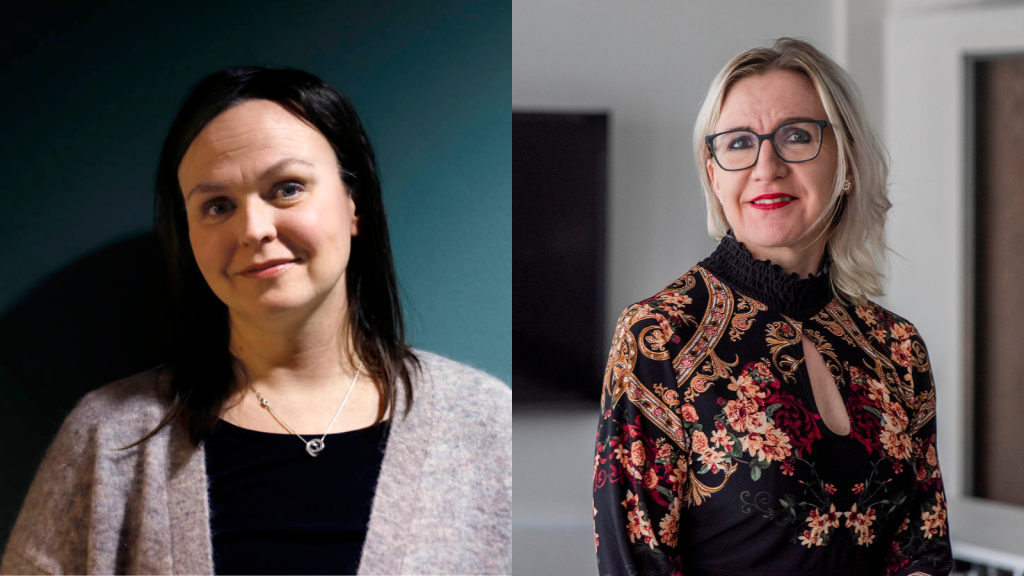We interviewed our member organisations about the changes to creative industries brought on by artificial intelligence. Creative industry organisations are calling for transparency regarding the training material for AI, as well as swiftness in compiling regulations. There is also need for shared discussions and developing shared practices in the field.
Artificial intelligence technologies are now developing at lightning speed, and the use of various applications utilising generative AI in particular is growing more common. Generative AI refers to artificial intelligence technologies that can produce new and unique content based on existing data. ChatGPT, for example, is able to produce content resembling natural language.
Our member organisations predict that artificial intelligence will bring major changes to creative industries. Even though artificial intelligence can help authors and publishers in their work, the rapid development of the technology also creates concerns. For example, it is unclear how copyrighted works have been used to train AI.
The European Union is currently preparing regulations for artificial intelligence. It has been proposed that a mandate of transparency be added to the decree in the works: technology companies should openly disclose what materials have been used to train the AI. In our view, this obligation of transparency would protect the authors’ and publishers’ chances of supervising their rights.
We interviewed our member organisations regarding artificial intelligence and the changes that it will bring to the industries they represent. We also asked what kinds of rules would be needed for this swiftly developing technology.
Book industry operators must seek out solutions together

Eeva Asikainen, lawyer of the Union of Finnish Writers:
It is still hard to see what the key changes caused by artificial intelligence to the book industry are. One concern is related to whether works created by artificial intelligence could start to compete with the work of authors in some ways. At the moment, books published with artificial intelligence are already being sold in the US, at least, but, as far as I know, they have hardly been best seller material so far.
Another concern is related to how the works of authors have been used for training generative artificial intelligence. The principle is that an author’s consent is needed for utilising their works and for making copies of them. No permission has been requested to train artificial intelligence and the authors have not received any compensation for use of their work.
The obligation of transparency suggested to be added to the AI regulation by the European Parliament this summer is important to the authors. If the author does not even know whether their work has been used to train AI, they are not able to monitor their rights.
Our national Copyright Act also regulates text and data mining. This refers to automated analysing of digital data mass. Generative AI, however, not only analyses the data mass, but utilises it to generate something new. So do the regulations pertaining to text and data mining also cover AI training? According to the law, an author also has the right to prohibit the use of their works in text and data mining, but, thus far, it has remained unclear how this prohibition can actually be done and who would execute it.
Even though the regulation on artificial intelligence is still a work in progress in the EU, Finland should also consider good practices and rules related to AI on a national level.
The development of artificial intelligence is a shared issue of the entire book industry, as well as the creative industries in general. Preparing a new law is always a slow process. That is why it is important for publishers and authors to consider and discuss together the possibilities and threats of artificial intelligence and how to react to them. In November, we held a discussion event together with publishers with the intention of considering these themes. The event was part of the Union of Finnish Writer’s Literature in digital transition project.
Moral copyrights must be upheld in the theatre and media fields

Lawyer Jussi Kiiski from the Trade Union for Theatre and Media Finland, Teme:
At the moment, the impacts of artificial intelligence remain quite minor in the industries represented by Teme and vary between the different professional groups, but AI has developed quickly over the past few years, and there are some threats.
One concern is whether creative work could start to be produced with solely artificial intelligence, resulting in entire groups of authors being dropped from the production chain. These threats related to employment are likely most pertinent for authors working with texts, such as screenwriters and dramaturges, but they could also extend to other creatives in the long run, for example in the audiovisual industry.
AI regulation is not only a national issue, but also an international question and a matter of EU law. I hope that the regulations could be consistent throughout EU member states.
The most important part is to increase the transparency of artificial intelligence. The authors represented by Teme must be better able to supervise how their works are used. When the work of authors is used as AI material without any remuneration, the operations do not have a sustainable basis. It would be great if the situation developed so that authors could license their own works and be compensated for their use. It is essential that the moral rights of the authors are upheld and they have the opportunity to supervise their copyrights.
I have also considered the impact of artificial intelligence on art and creative works in general in the long run. Artificial intelligence is not capable of independent creative work – it is always dependent on people. If works are more and more created with just AI and based on works previously created with AI, what will happen to the quality of culture and art in the future?
It is not feasible for each music creator to negotiate with large technology companies one-on-one

Board member of the Finnish Music Creators’ Association, music creator and producer Kyösti Salokorpi:
In my understanding, the work of authors is fairly simple to replace in more generic background music formats. This could apply to things such as relaxation music or background music for videos.
Hit pop songs and top radio hits are a completely different thing. Every day, 120,000 new songs are added to Spotify and this number will increase with artificial intelligence in play, but the peak is very narrow. I don’t believe that artificial intelligence will develop into a competitor there. Quality-wise, I don’t think the songs made with artificial intelligence alone are anywhere near human-made songs at the moment. In future, artificial intelligence will more likely be used as a tool for making music.
The most urgent issue is related to the material used to train artificial intelligence. How are the creators of songs compensated if artificial intelligence is trained with existing songs? It is vital to agree on some kind of rules for this.
When the AI model has been trained once and starts to produce data, it will not be possible to afterwards review what it is actually doing and what it has learned. This is why the transparency of AI training material should be a mandatory requirement.
At the moment, we are in a rush to get to the right meeting tables. As the AI models are becoming more extensive, maybe even studying the text mass of the entire Internet, the work of an individual author does not have much weight. Therefore, the compensation should be similar to the compensation for private copying.
It is not feasible for every creator to hold individual negotiations with the large technology companies; the discussions must be based on extensive collective rights. As the companies developing artificial intelligence operate transnationally, the key discussions on the regulations are held at EU level or globally.
I also see artificial intelligence as an opportunity. It can offer a larger crowd the opportunity to make art, making it possible for those who have not been able to access an education or use the existing means to express themselves. The development of artificial intelligence cannot be stopped, but it must be ensured that the related principles are fair.
Will the products made with AI applications compete with media?

Director of Finnish Magazine Media Association Mikko Hoikka:
There are at least two perspectives on the changes artificial intelligence brings to the publishing industry. One of these perspectives is related to protecting one’s own content. Magazine media compete with the international, notably larger operators of the platform economy. The materials of publishers have already been used to train artificial intelligence. The concern is whether the AI applications are able to create products that compete even more strongly with the media by freely utilising previously created works.
On the other hand, the publishing industry is also interested in how AI could be used as a tool. Would it be possible to create better content or optimise the work processes with artificial intelligence? I don’t think that the work of journalists or photographers, for example, would be extensively replaced with AI. At its best, however, AI could be used to dig deeper into the topics or produce better content after some of the work stages are transferred to artificial intelligence.
When the newspaper and magazine publishers’ related rights were included in the Copyright Act earlier this year, it was not limited to content exceeding the threshold of originality. Instead, it protects the content of newspaper and magazine articles in general. This means that a newspaper or magazine article made with AI is also automatically covered by the law, which is a good starting point for the future.
At the moment, the biggest issue in the regulation related to artificial intelligence and copyright is the lack of transparency. It is difficult for publishers to track down whether their publications have been used to train AI. Products of artificial intelligence are often different enough from the original works that it is not possible to detect any copyright violations in the end product. However, the data in the output does have indications on what copyrighted works have been used to train the artificial intelligence.
The AI regulation being prepared by the EU gives some hope. The decree is not part of the actual copyright legislation, and I have also heard some views that copyright issues are not even covered by it. As the AI applications are developing so quickly, however, we should not just sit back and wait for the copyright directive to be updated.
The transparency mandate, at least, is a natural part of the artificial intelligence decree. It could even be a more extensive obligation than copyright itself. There are also other legitimate interests related to the transparency of AI training material, such as how personal and private information is being utilised.
Translation also requires knowledge of culture and society

Executive Director of the Finnish Association of Translators and Interpreters, Jenni Kavén:
Translators have been using machine translation as a tool for a long time, for example combined with translation memories or speech recognition tools. Use of artificial intelligence may make the more mechanic work stages faster still, also making the translator’s work faster. A translator or interpreter can use artificial intelligence for searching for information and terms, for example. However, reliability and correctness of data are important factors, and it is not guaranteed that artificial intelligence would be able to find the correct linguistic equivalent or term.
It has been suggested that artificial intelligence could, in part, replace the work done by translators. This is likely related to text types with a great deal of simple repetition that could theoretically be easy to automate. However, using artificial intelligence does not remove the mental work, which is still the responsibility of the text’s author or translator. If the AI output is not of high quality, does it make the work any faster? The significance of critical thinking and source criticism cannot be overemphasised to AI users.
Translation is never just simply translating the language, it also takes knowledge of culture and society. A translator may even create new concepts for a language. It should be considered how to identify mistakes made by AI related to, for example, cultural phenomena. The reader of the text may not identify these, as they are not a professional of language and culture.
Texts based on artificial intelligence can also impact the development of language or our thinking in the long term. Would artificial intelligence have been able to come up with the world of the Lord of the Rings as translated into Finnish by Kersti Juva? Would it have been able to create the imaginative names in Harry Potter as well as the translator Jaana Kapari-Jatta? Translators of literature create these kinds of new worlds all the time.
The copyrighted translations of literary translators, non-fiction and document translators and audiovisual translators are used to train machine translation tools, and no separate compensation is paid to the translators. At the moment, the legislation in the matter is lacking, which is why technology companies are getting all the benefits at the cost of creative industries’ authors.
Authors and creators must have the right to decide whether their works are used to train AI technologies, and they must also be compensated for it. It is also important to consider what kind of copyright can be given to a translation or other text made with the help of artificial intelligence. AI legislation cannot contradict the legislation related to copyright.
The expertise of the following people has also been utilised for the interview: Sirpa Alkunen, Pia von Essen, Sanna Kokkonen, Maarit Koponen and Mary Nurminen.
Journalists must be able to assess the reliability of information generated by AI

The Union of Journalists in Finland, lawyer Sanna Nikula and expert of international affairs Salla Nazarenko:
It is difficult to assess the extent of changes brought on by artificial intelligence, but it is clear that AI will change the profession of a journalist a great deal. Artificial intelligence is already being used for searching for information, processing materials, doing layouts, for sports results, reading texts out loud and drafting interview questions. Artificial intelligence is becoming a tool that will change the work of journalists just as much as the internet and, later, social media.
At its best, AI can make routine work faster, leaving more free time for creative work and analysis. In the worst-case scenarios, artificial intelligence will ‘replace’ journalists. However, artificial intelligence is not capable of ethical decision-making – it plagiarises and may reinforce stereotypes. Artificial intelligence may be a great tool, but human mind is needed to wield it.
The impact of AI on the work of journalists has been considered carefully within the industry, as have the principles related to utilising it. The journalism guidelines are currently being renewed, and the process will also review questions related to artificial intelligence.
From the perspective of journalists, it is important to obligate the developers of AI to share what materials have been used to train the AI. A journalist must be able to assess the reliability of information produced by artificial intelligence if they use AI in their work.
Of course, openness is also important for supervising journalists’ own copyrights as the material made by journalists is likely widely used to train AI. Journalists should have the opportunity to negotiate whether the materials they create can be used to train artificial intelligence, as well as the potential remunerations. This could be arranged naturally through joint management.
A total of 72% of illustrators concerned about their copyrights

Executive Director Asta Boman of the Finnish Illustration Association:
It is still difficult to assess what changes generative artificial intelligence will bring in the field of illustration. Their positivity or negativity is largely dependent on how quickly a fair legal framework can be built for artificial intelligence.
The Finnish Illustration Association implemented a survey on the topic for its members in May 2023. At the time, more than a third of illustrators stated that they are cautiously interested in the possibilities of AI, but 85% had not yet tried using it as part of their illustration work. I believe that the interest of illustrators in the possibilities offered by artificial intelligence is dimmed by the fact that there are many ethical questions related to using it.
However, it does offer possibilities. I think the possibility of training the AI with one’s own illustration style is an interesting option, as this would make the routine work stages more efficient. Artificial intelligence can also be utilised for brainstorming. It can also make background work easier for an illustrator visualising complex phenomena. AI can be interviewed on what kinds of approaches could be adopted to the topic.
The depth and vision of an illustrator’s visual story-telling, original expression and techniques are at the heart of the work of professional illustrators. When combined, these create the recognisable style of the illustrator, which I believe to be the best protection in the competition against images produced by AI.
A total of 72% of illustrators are concerned about the copyright issues related to artificial intelligence. Firstly, they are concerned about AI being trained on their illustrations without their consent and without any remuneration. Another major issue is the currently available option to mimic an illustrator’s style using the ‘in the style of’ prompts, especially as these images can be used for questionable or political purposes.
Mining creative content to feed generative artificial intelligence must become transparent and have clear limits, rules and remuneration policies. Authors must have the option to opt out from the mining and negotiate on the quantities and remunerations of rights given. Thus far, the Copyright Act has not protected an illustrator’s or other creative industry author’s style, but updating the Act should now be considered regarding this, to control the ‘in the style of’ outputs. It is important that we also quickly update our national Copyright Act in addition to the EU regulation related to artificial intelligence, as well as our other legislation, if necessary.
Interviews and text: Iina Saarinen

